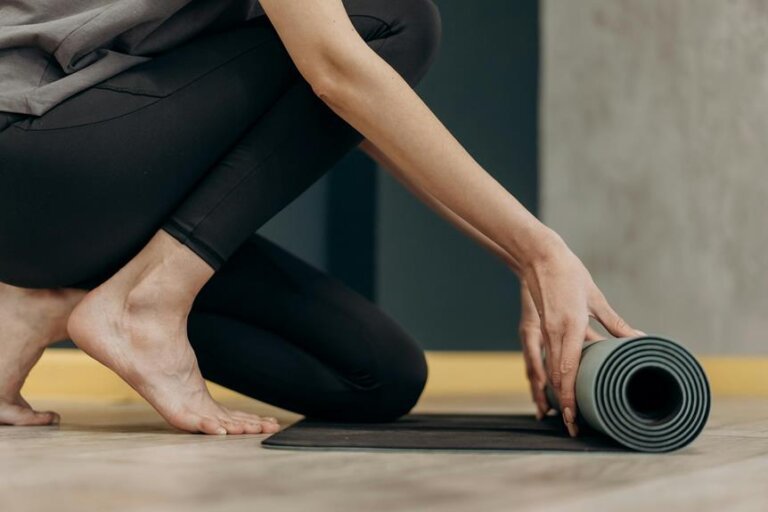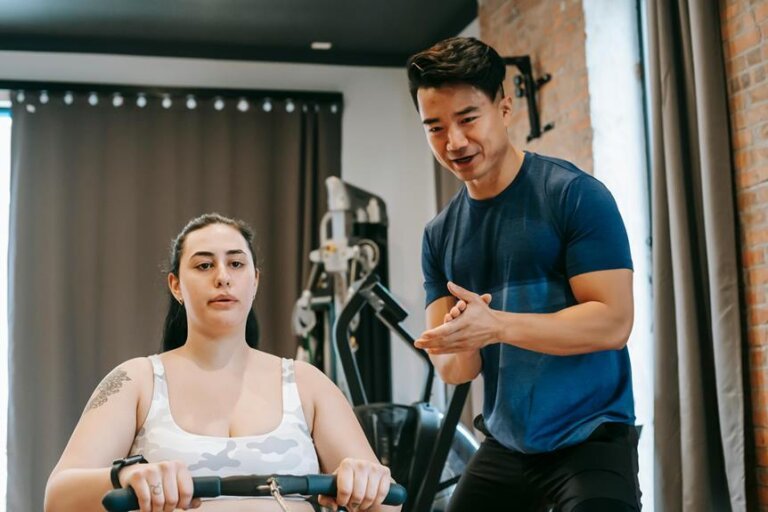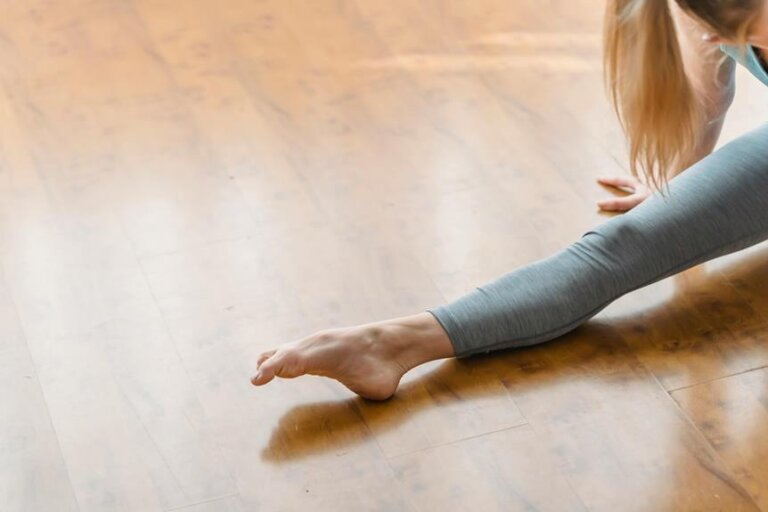How to Create a Sustainable Fitness Routine as You Age
As you age, it's essential to adjust your fitness routine to align with your changing body while maintaining your active lifestyle.
But how can you strike the right balance between pushing yourself and avoiding injury? By understanding the importance of age-appropriate exercises and setting realistic fitness goals, you can pave the way for a sustainable fitness routine that supports your overall well-being.
Let's explore key strategies that will help you stay fit and healthy as the years go by.
Importance of Age-Appropriate Exercises
As you age, selecting exercises that are suitable for your current physical condition and health status becomes crucial for maintaining a sustainable fitness routine. It's essential to prioritize activities that support your body and overall well-being. Low-impact exercises like walking, swimming, or cycling can be gentle on your joints while still providing a good workout. These activities help improve cardiovascular health, muscle strength, and flexibility without putting excessive strain on your body.
Additionally, incorporating balance and flexibility exercises into your routine can enhance stability and reduce the risk of falls, which becomes more important as you age. Yoga, tai chi, or simple balance exercises can help maintain and improve your balance, coordination, and flexibility. Strengthening exercises, such as using resistance bands or light weights, are also beneficial for preserving muscle mass and bone density, crucial for overall physical function.
Setting Realistic Fitness Goals
To make sustainable progress in your fitness journey as you age, it's essential to set realistic goals that align with your current physical capabilities and health needs. Setting achievable targets tailored to your individual circumstances will help you stay motivated and prevent injury.
Begin by assessing your current fitness level and consulting with a healthcare provider or fitness professional to understand any limitations or considerations. From there, establish short-term and long-term goals that are specific, measurable, attainable, relevant, and time-bound (SMART). For example, aiming to walk for 30 minutes a day or complete a certain number of bodyweight exercises each week can be excellent starting points.
Incorporating Strength Training
Incorporate strength training into your fitness routine to enhance muscle mass and improve overall physical function as you age. Strength training involves using resistance to build strength, endurance, and muscle mass. As you get older, maintaining muscle mass becomes increasingly important for supporting your joints, preventing injuries, and preserving your overall mobility.
Focus on compound exercises that work multiple muscle groups simultaneously, such as squats, deadlifts, and push-ups. These exercises not only help you build strength more efficiently but also mimic real-life movements, making daily tasks easier to perform. Start with light weights and gradually increase the resistance as your strength improves.
Consistency is key when it comes to strength training. Aim for at least two to three sessions per week to see noticeable improvements in your muscle mass and overall strength. Remember to give your muscles time to rest and recover between sessions to prevent overtraining and injuries.
Balancing Cardio and Flexibility
When crafting your fitness routine, remember that cardio workouts help keep your heart healthy, while flexibility exercises enhance your mobility.
It's crucial to strike a balance between the two to reap the combined benefits of a well-rounded workout regimen.
Cardio for Heart Health
Balancing cardio exercises with flexibility routines is essential for maintaining heart health as you age. Cardiovascular exercises, such as brisk walking, jogging, cycling, or swimming, elevate your heart rate, improving circulation, and strengthening your heart muscle. Aim for at least 150 minutes of moderate-intensity cardio each week to reap the full benefits.
Not only does cardio help manage weight and reduce the risk of heart disease, but it also boosts your overall well-being. Make sure to include a variety of cardio activities to keep it engaging. Remember, consistency is key in reaping the long-term rewards of a healthy heart.
Flexibility for Mobility
Maintaining a strong cardiovascular system through regular cardio exercises not only improves heart health but also sets a solid foundation for enhancing mobility and flexibility as you age.
By incorporating flexibility exercises like yoga, Pilates, or simple stretches into your routine, you can increase your range of motion, improve posture, and reduce the risk of injuries. Flexibility training helps to keep your muscles and joints supple, allowing for better movement patterns and overall agility.
Balancing cardio with flexibility exercises can aid in preventing stiffness and maintaining independence as you grow older. Remember, a well-rounded fitness routine that includes both cardio and flexibility training is key to promoting mobility and ensuring a sustainable approach to fitness as you age.
Balanced Workout Benefits
To achieve optimal fitness outcomes as you age, ensure your workout routine strikes a balance between cardio exercises and flexibility training.
Cardio workouts like brisk walking, cycling, or swimming help enhance heart health, burn calories, and improve endurance. Engaging in cardio activities for at least 150 minutes per week can boost your overall fitness levels.
Additionally, incorporating flexibility exercises such as yoga or stretching routines can improve joint mobility, prevent injuries, and enhance muscle recovery. Flexibility training helps maintain range of motion and allows for better performance in daily activities.
Prioritizing Rest and Recovery
Make sure you allocate sufficient time for rest and recovery in your fitness routine to promote optimal physical and mental well-being. Rest is a crucial component of any fitness regimen as it allows your body to repair and strengthen itself after workouts. Without proper rest, you risk burnout, injuries, and decreased performance.
Aim for 7-9 hours of quality sleep each night to support your body's recovery processes. In addition to sleep, incorporate rest days into your weekly schedule to give your muscles time to recover. Active recovery, such as gentle stretching or yoga, can also help improve circulation and reduce muscle soreness.
Listen to your body and prioritize rest when you feel fatigued or sore. Overtraining can lead to chronic injuries and setbacks in your fitness journey. Remember, progress isn't just made during workouts but also during periods of rest when your body adapts and grows stronger.
Seeking Professional Guidance
Consider consulting with a certified fitness trainer or healthcare professional to tailor a fitness plan that suits your age and individual needs. These professionals can assess your current fitness level, any health concerns, and help you set realistic goals. A customized plan can prevent injuries and ensure that you're engaging in activities that benefit your overall well-being.
A fitness trainer can design a workout routine that takes into account your age-related limitations and strengths. They can also teach you proper form and techniques to maximize the effectiveness of your exercises while minimizing the risk of injury. Furthermore, a healthcare professional can provide valuable insights into any medical conditions you may have and offer guidance on how to adapt your fitness routine accordingly.
Frequently Asked Questions
How Can I Modify My Current Fitness Routine to Accommodate Age-Related Changes in My Body?
You can adjust your fitness routine to suit age-related changes. Focus on low-impact exercises like swimming or yoga. Incorporate strength training to maintain muscle mass. Listen to your body, prioritize recovery, and consult a professional for guidance.
Are There Specific Exercises That Can Help Prevent Common Age-Related Injuries?
To prevent age-related injuries, focus on exercises that improve balance and flexibility. Incorporate yoga or tai chi into your routine. These activities strengthen muscles, enhance stability, and reduce the risk of falls as you age.
How Often Should I Be Adjusting My Fitness Routine as I Age?
As you age, adjust your fitness routine every 6-8 weeks to prevent plateauing and keep challenging your body. Listen to your body's cues and make changes as needed to continue progressing and staying healthy.
What Are Some Signs That Indicate I May Need to Dial Back on My Exercise Intensity?
Feeling persistent fatigue, experiencing unusual soreness, noticing changes in your heart rate, or having trouble recovering are signs it might be time to ease up on your exercise intensity and adjust your routine.
How Can I Maintain Motivation and Consistency in My Fitness Routine as I Get Older?
Struggling to stay consistent with workouts as you age? Start by setting realistic goals, vary your routine to keep it interesting, find a workout buddy for accountability, and listen to your body to avoid burnout.
Conclusion
As you age, it's important to create a sustainable fitness routine that suits your body's needs.
Did you know that adults over 65 should aim for at least 150 minutes of moderate-intensity aerobic activity every week?
By incorporating age-appropriate exercises, setting realistic goals, and seeking professional guidance, you can maintain your fitness and health for years to come.
Remember, it's never too late to start taking care of your body and staying active.






